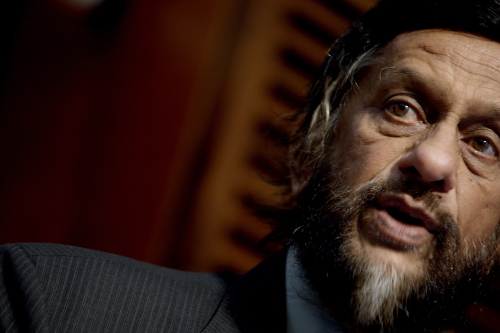Aerosol reflectors in space proposed as climate change solution
By 조정은Published : June 21, 2011 - 10:51

An U.N. body plans to develop a radical geo-engineering technology to blast aerosol "mirrors" in the space to tackle climate change, the Telegraph reported.
The Intergovernmental Panel on Climate Change papers were leaked ahead of the meeting in Peru, revealing various outlines of techniques to curb climate change, it said.
Other suggestions include painting streets and roofs white, growing lighter colored crops to reflect sunlight and dumping a large quantity of iron fillings into the ocean. Moreover, sending reflective aerosols into the stratosphere and spraying sea water into clouds are proposed by the 60 leading scientists.
The Guardian reported that scientists admit that they still face many uncertainties and risk involved in executing geo-engineering technologies. However, the meeting in Peru is scheduled to deliver governments with a scientific assessment of geo-technologies and gain financial support for large-scale experimentation.
Due to rising CO2 concentration and volcanic seeps in the ocean floor, IPCC predicts that worldwide ocean PH level will reduce from 8.1 to 7.8. The increasing acidity of the oceans is expected to make coral reefs extinct by the end of the century. The IPCC report comes at the urgent moment when a serious threat is posed to the basis of marine ecosystems.
By Jung Eun-jung
(kristin2j@gmail.com)
Intern reporter
<한글 요약>
‘우주 거울’로 햇빛 반사해 기후 변화 해결한다
IPCC (기후변화에 관한 정부간 협의체)에서는 현재 연무제를 ‘거울’로 삼아 대기권 밖에 뿌려 기후변화를 해결하는 방안이 논의되고 있다고 텔레그레프지가 보도했다.
IPCC에서 지구공학을 이용한 이산화탄소 감소 방안에 관한 보고서가 페루 회의에 앞서 누출되면서 이와 같은 논의가 공개되었다.
보고서에서 제시된 방안들로는 햇빛을 반사시키기 위해 거리와 지붕을 흰색 페인트로 채색, 밝은 색의 농작물 재배 외에 성층권에 반사 기능을 가진 연무제를 보내는 것등이 있다. 구름에 해수를 뿌리는 것 또한 IPCC 소속 60명의 과학자들에 의해 제안된 방안이다.
그러나 영국 가디언지에 따르면 과학자들이 이러한 지구공학적 기술이 실제 적용되었을 때 상당히 위험한 결과를 초래할 수 있으며, 그 효과가 불확실할 수 있다고 한다.
이러한 불확실성에도 불구하고 다음 주로 예정된 페루 회의에서는 각 정부들이 지구공학 및 기술의 과학적 평가를 알리고 대규모의 실험 지원금을 받을 수 있는 기회가 될 것으로 기대된다.
IPCC는 증가하는 이산화탄소 농축과 화산성 물질의 해양 침투로 인해 전 세계 해양 산성도가 현재 8.1ph에서 7.8ph까지 떨어질 것으로 예상하고 있다. 그리고 이러한 해양의 산성화는 21세기가 끝나기 전에 산호초의 멸종을 초래할 수 있다고 한다.
금번 공개된 IPCC의 조사 자료는 해양 생태계의 근본 토대인 산호초가 심각한 위험에 처해진 지금 가능성 있는 돌파구를 시사하고 있다.
‘우주 거울’로 햇빛 반사해 기후 변화 해결한다
IPCC (기후변화에 관한 정부간 협의체)에서는 현재 연무제를 ‘거울’로 삼아 대기권 밖에 뿌려 기후변화를 해결하는 방안이 논의되고 있다고 텔레그레프지가 보도했다.
IPCC에서 지구공학을 이용한 이산화탄소 감소 방안에 관한 보고서가 페루 회의에 앞서 누출되면서 이와 같은 논의가 공개되었다.
보고서에서 제시된 방안들로는 햇빛을 반사시키기 위해 거리와 지붕을 흰색 페인트로 채색, 밝은 색의 농작물 재배 외에 성층권에 반사 기능을 가진 연무제를 보내는 것등이 있다. 구름에 해수를 뿌리는 것 또한 IPCC 소속 60명의 과학자들에 의해 제안된 방안이다.
그러나 영국 가디언지에 따르면 과학자들이 이러한 지구공학적 기술이 실제 적용되었을 때 상당히 위험한 결과를 초래할 수 있으며, 그 효과가 불확실할 수 있다고 한다.
이러한 불확실성에도 불구하고 다음 주로 예정된 페루 회의에서는 각 정부들이 지구공학 및 기술의 과학적 평가를 알리고 대규모의 실험 지원금을 받을 수 있는 기회가 될 것으로 기대된다.
IPCC는 증가하는 이산화탄소 농축과 화산성 물질의 해양 침투로 인해 전 세계 해양 산성도가 현재 8.1ph에서 7.8ph까지 떨어질 것으로 예상하고 있다. 그리고 이러한 해양의 산성화는 21세기가 끝나기 전에 산호초의 멸종을 초래할 수 있다고 한다.
금번 공개된 IPCC의 조사 자료는 해양 생태계의 근본 토대인 산호초가 심각한 위험에 처해진 지금 가능성 있는 돌파구를 시사하고 있다.







![[Graphic News] More Koreans say they plan long-distance trips this year](http://res.heraldm.com/phpwas/restmb_idxmake.php?idx=644&simg=/content/image/2024/04/17/20240417050828_0.gif&u=)
![[KH Explains] Hyundai's full hybrid edge to pay off amid slow transition to pure EVs](http://res.heraldm.com/phpwas/restmb_idxmake.php?idx=644&simg=/content/image/2024/04/18/20240418050645_0.jpg&u=20240419100350)





![[From the Scene] Monks, Buddhists hail return of remains of Buddhas](http://res.heraldm.com/phpwas/restmb_idxmake.php?idx=652&simg=/content/image/2024/04/19/20240419050617_0.jpg&u=20240419175937)

![[KH Explains] Hyundai's full hybrid edge to pay off amid slow transition to pure EVs](http://res.heraldm.com/phpwas/restmb_idxmake.php?idx=652&simg=/content/image/2024/04/18/20240418050645_0.jpg&u=20240419100350)

![[Today’s K-pop] Illit drops debut single remix](http://res.heraldm.com/phpwas/restmb_idxmake.php?idx=642&simg=/content/image/2024/04/19/20240419050612_0.jpg&u=)